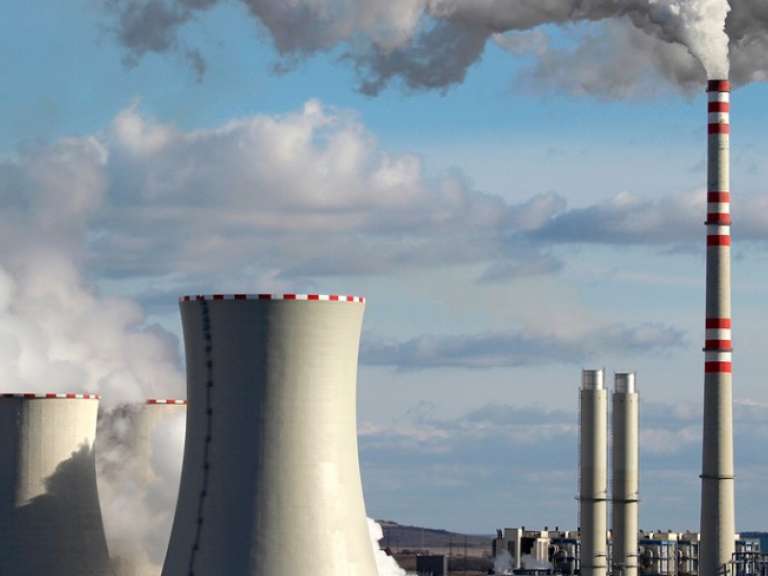New Technology for Streamlining Power Plant Maintenance
Heidi VellaNew technology is making it easier for power plant asset managers to streamline maintenance.

New technology in power plants can help asset managers produce more affordable, accessible, reliable, and sustainable energy to meet cost and efficiency targets.
The world's energy demand will increase by 48 percent between 2012 and 2040, according to the US Energy Information Administration's 2016 International Energy Outlook. Power plant managers are responsible for keeping plant assets running efficiently while always looking to the future and preparing for growth in energy demand. They must also manage disparate systems, such as running renewable energy alongside gas turbines, as well as distributed energy systems and smart grids.
If they are to better manage critical assets and meet the growing demand for affordable energy, asset managers need to utilize software and analytics that provide useful digital solutions and help them remain agile amid continuing change.
IT solutions are no longer just ancillary services to support operations—digital innovation, sensor technology, and broadband are now key elements in addressing new business challenges. Most investors and experts agree that asset management must embrace new technology in power plants to remain competitive.
However, although utility asset managers face regulatory, business, and public pressures to implement long-overdue maintenance upgrades, they are also required to keep costs down. Often it can be a juggling act keeping up with the pace of new technology while staying on budget and managing the day to day running of a plant.
The good news is that the cost of many new technologies, such as remote monitoring equipment and analytical software, are continuing to fall. It's hard to quantify because a case-by-case assessment is needed, but it is possible the benefits will outweigh the cost, especially in the longer term.
Technology deployment for predictive maintenance is one of the key new technologies of the digital grid. This technology forecasts when equipment failure might occur or enables operators to prevent forced outages by performing preemptive maintenance. The cost of the condition monitoring equipment needed for predictive maintenance is high and the skill level and experience required to accurately interpret condition monitoring is demanding, resulting in significant upfront costs.
While this can be a challenge, predictive maintenance can save asset managers time and money by helping them avoid costly shutdowns or maintenance work. For example, outages can be scheduled during off-peak or shoulder periods.
The cost of much of the equipment needed for remote predictive maintenance, such as sensors, communications devices, and other hardware, have become increasingly affordable, meaning the overall cost is falling. Of course, an appropriate assessment of each asset should be made to assess whether predictive maintenance is an appropriate solution or not.
Predictive maintenance can be particularly useful for distributed energy systems which are geographically dispersed and therefore hard to regularly inspect. The growth of distributed energy generation is challenging current business models and established practices. Increasing real-time visibility into distributed assets can provide a heightened level of control and flexibility necessary to more effectively manage the technical challenges posed by an increasingly distributed grid.
Predictive maintenance strategies can also utilize holistic data across history, mobile inspections, and manufacturer specifications to help manage inspections more efficiently. Real-time monitoring diagnostic and virtual collaboration technologies can be used to create greater system connectivity.
In turn, regulators need to embrace this new technology and allow utilities to rate base it.
As power plant managers implement predictive maintenance strategies, they may find the amount of data and near real-time insight at their fingertips—from a surge in data availability across assets—can be overwhelming. Apart from improving maintenance, what else can be done with all this data and how should it be managed? Nowadays, analytical tools for processing, interpreting, and responding to data are largely very affordable, so productively utilizing this data is becoming easier.
Data, both real-time and historic, can be used to provide a whole host of other improvements to the management of critical assets. These include gaining visibility and control over operational risks and asset-management practices, helping managers plan budgets more effectively, as well as protocols for department heads and maintenance staff. "What if" scenario testing, which lets executives consider how the recommended asset-management plan would change if they were to make alternative choices, can be measured more accurately. It can also help managers have more constructive conversations with regulators and improve the overall decision-making process and health of the plant.
Adapting to the rapid onset of new technology for power plant maintenance and management can be challenging. But with the right staff training and product partner, and the increasing affordability of such technology, the benefits stand to outweigh any challenges during the transition period.
Demand-side response technology can help utilities better manage load dispatch at times of peak demand, gain greater insight into customer behavior, and capture new revenue streams.
Power plant automation is alleviating more than just maintenance troubles—it's also tackling workforce management issues.
Improving flexibility and efficiency at low loads can enhance steam plant profits, along with lowering maintenance costs.